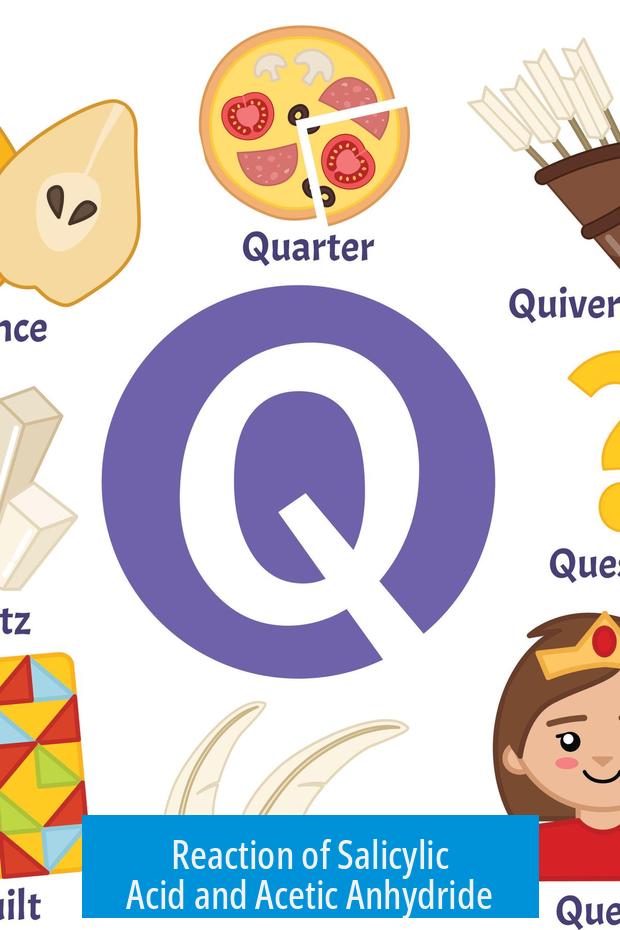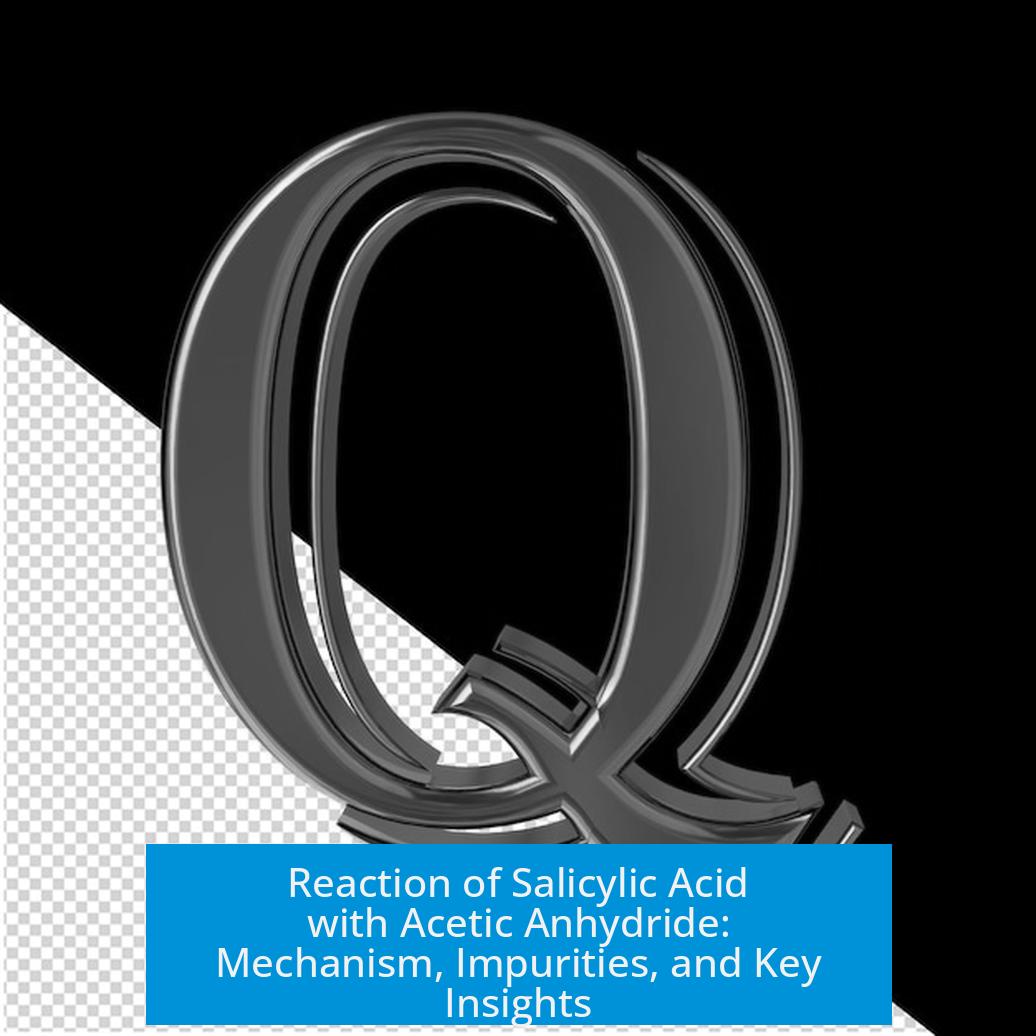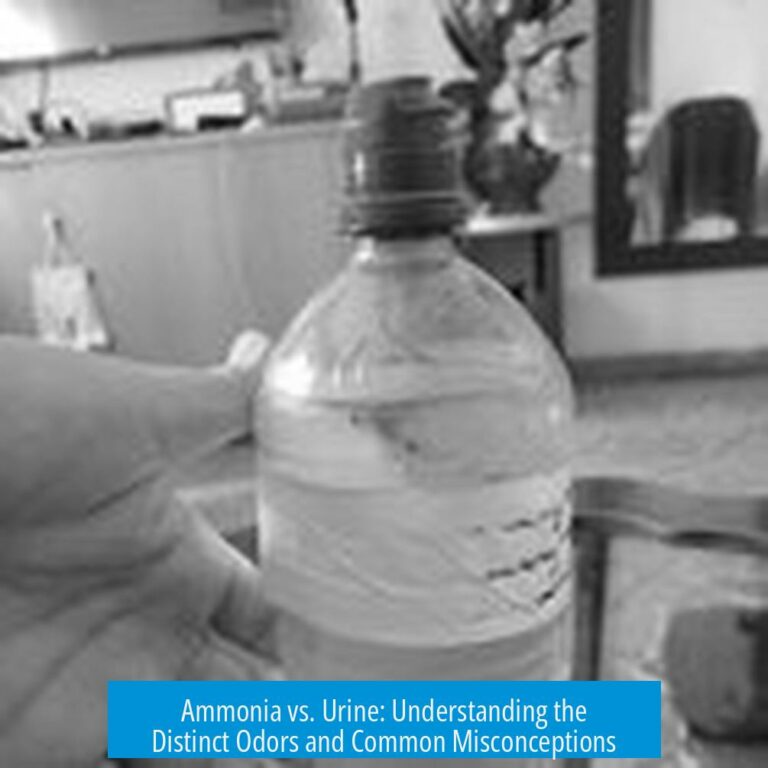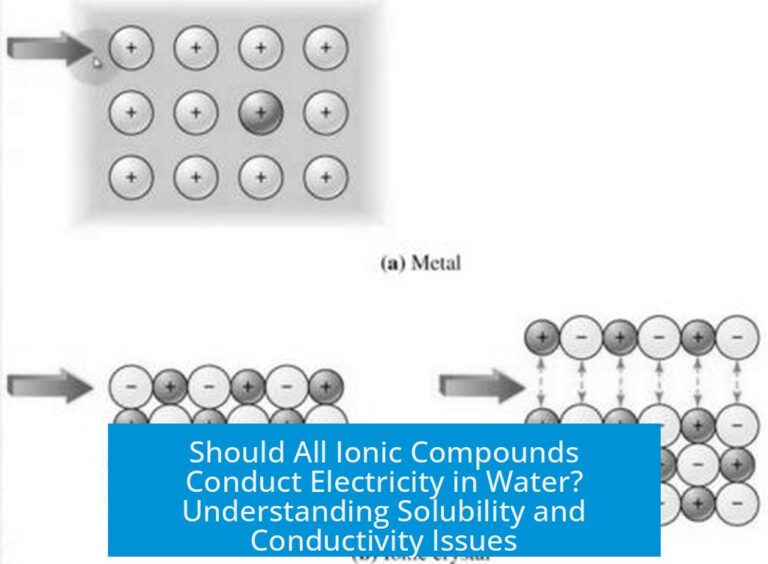Reaction of Salicylic Acid and Acetic Anhydride

The reaction of salicylic acid with acetic anhydride produces aspirin (acetylsalicylic acid) through acetylation of the phenolic -OH group. This process commonly involves an acid catalyst to increase efficiency. The reaction forms aspirin by transferring an acetyl group from acetic anhydride to salicylic acid’s phenol site.
Role of Acid Catalyst
An acid catalyst, such as sulfuric or phosphoric acid, protonates acetic anhydride. This increases the electrophilicity of the carbonyl carbon, making it more susceptible to nucleophilic attack by the phenol oxygen of salicylic acid.
The catalyst speeds up the reaction and helps achieve better yields of aspirin without significant side products.
Reaction Mechanism
- Protonation of acetic anhydride activates the carbonyl carbon.
- The phenol oxygen of salicylic acid attacks the activated carbonyl carbon, forming an intermediate mixed anhydride.
- The intermediate rearranges, breaking the anhydride bond, releasing acetic acid, and yielding aspirin.
The carboxylic acid group on salicylic acid can also interact with acetic anhydride, leading to formation of a mixed anhydride impurity if excess acetic anhydride is used.
Formation of Mixed Anhydride Impurity
Using excess acetic anhydride risks acetylation of both phenol and carboxylic acid groups on salicylic acid. This forms a mixed anhydride impurity which is more reactive.
This impurity usually hydrolyzes back to salicylic acid during aqueous workup, but sometimes it can persist affecting purity and yield.
Summary Table

| Step | Description |
|---|---|
| Activation | Acid catalyst protonates acetic anhydride, increasing electrophilicity. |
| Nucleophilic Attack | Phenol group attacks activated carbonyl carbon, forming mixed anhydride intermediate. |
| Rearrangement | Intermediate breaks down, releasing acetic acid and forming aspirin. |
| Side Reaction | Excess anhydride acetylates carboxylic acid, creating mixed anhydride impurity. |
Key Takeaways
- The main product is aspirin formed by acetylation of the phenol group in salicylic acid.
- An acid catalyst promotes the reaction by activating acetic anhydride’s carbonyl group.
- Excess acetic anhydride leads to mixed anhydride impurities that may hydrolyze during workup.
- The reaction involves nucleophilic attack on protonated acetic anhydride, followed by rearrangement.





Leave a Comment